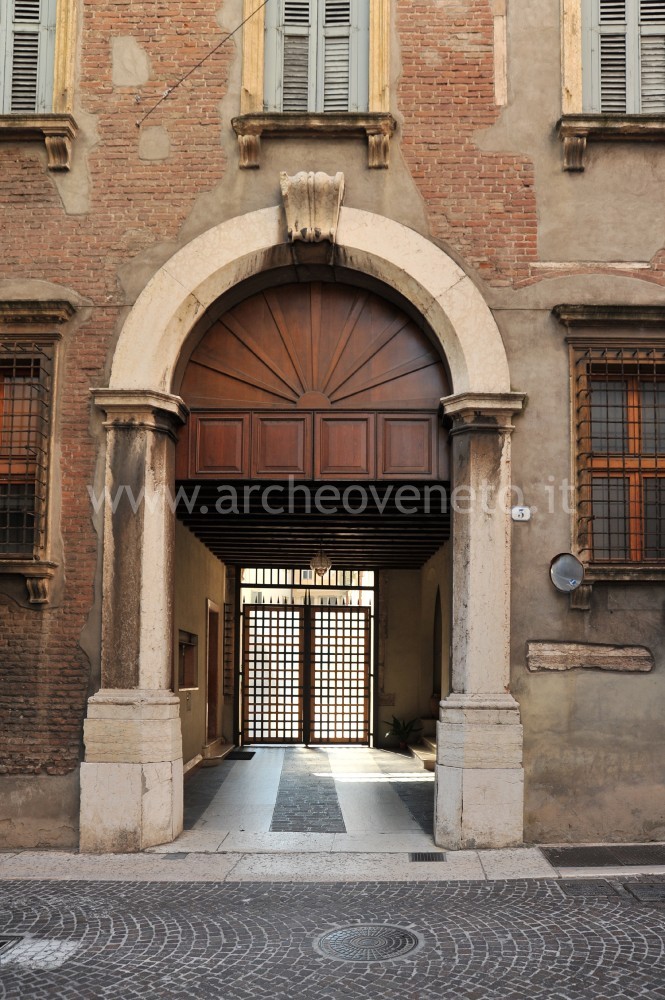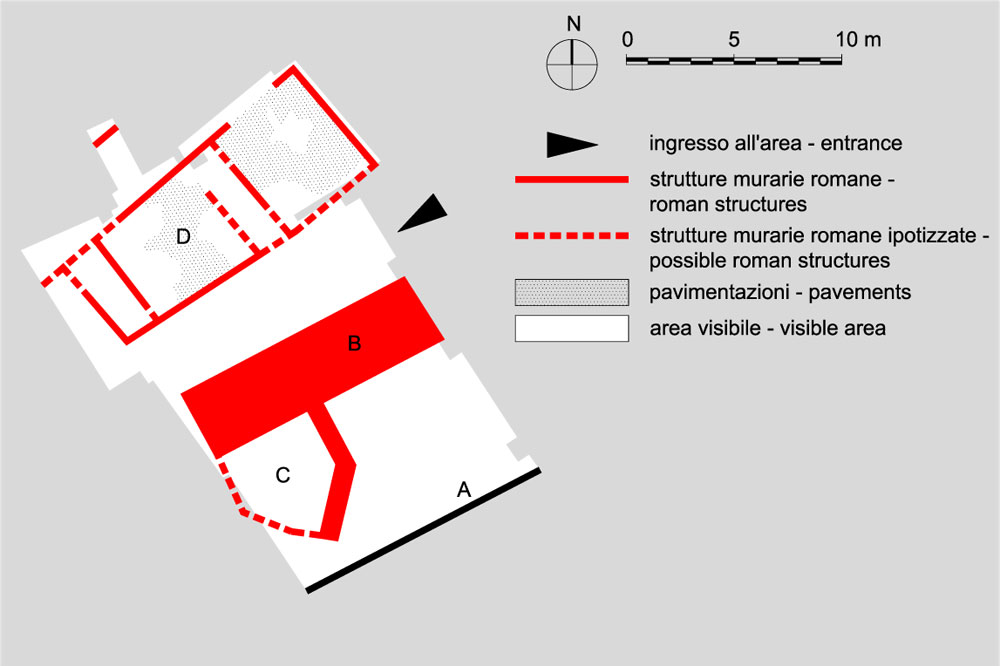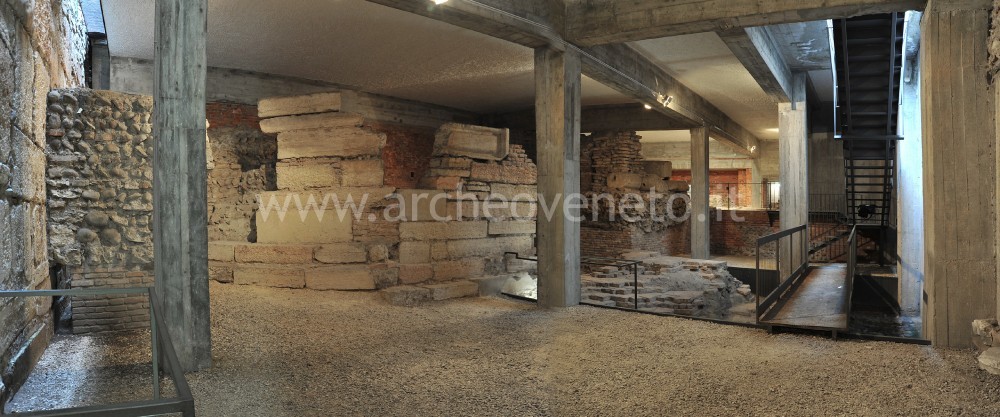| Via S. Cosimo 3, inside the Institute of the nuns "Figlie di Gesù" - 37100 Verona (VR)
|
|
|
Summary
The archaeological area that was discovered under the institute of the nuns "Figlie di Gesù" includes a short piece of the republican and Theodorican walls, of the remains of a Roman house and of part of a pentagonal tower.History of research
The excavations were carried out between 1970 and 1975 by the General Direction for Archaeological Heritage in the Veneto region on the occasion of the Institute’s works to lay the gas oil cisterns underground.
Urban and geographical context
Verona is located along the Adige river, where this enters in the Po plain, at about thirty kilometres east to the Garda lake. Its altitude is 59 metres above sea level and it is placed at the basis of the Lessini mountains. This archaeological area is located in the old town centre of Verona, slightly north-east to the arena, and in Roman times it used to mark the city boundary.
Chronology
I century B.C. (mid) - V century A.D. (second half) |
 |  |
|
Visiting
Admission: Solo su prenotazione
Su prenotazione;
Visitability: Interno;
Ticket: No;
 School accessUpon reservation at the School entrance 045 8003894 School accessUpon reservation at the School entrance 045 8003894
|
Recommended tour time (minutes): 30 |
|
Services for visitors
|
Educational Services
 Guide a stampa Guide a stampaTypewritten description of the site, available at the concierge’s room of the Institute. |
Bibliography
| Mangani E., Rebecchi F., Strazzulla M.J. 1981, Emilia, Venezie (Guide Archeologiche Laterza), Bari, pp. 168. |
| Marchini G.P. 1985, L’area di Piazza Nogara nel quadro urbanistico di Verona romana, in Testimonianze di 2000 anni di storia urbana negli edifici centrali della Banca Popolare di Verona, Verona, pp. 26. |
| Cavalieri Manasse G. 1987, Verona, in Il Veneto nell'età romana, II, a cura di Cavalieri Manasse G., Verona, pp. 42. |
| Cavalieri Manasse G. 1993, Le mura di Verona, in Mura delle città romane in Lombardia, Atti del Convegno (Como 1990), Como, pp. 179-215. |
| Cavalieri Manasse G. 1993, Le mura teodoriciane di Verona, in Teoderico il grande e i Goti d'Italia, Atti del XIII Congresso internazionale di Studi sull'Alto Medioevo (Milano 1992), Spoleto, pp. 634-644. |
| Archeologia a Verona 2000, a cura di Bolla M., Milano, pp. 63-66. |
| I luoghi della cultura 2006, Roma, pp. 385. |
| Bonetto J. 2009, Veneto (Archeologia delle Regioni d'Italia), Roma, pp. 449-450. |
